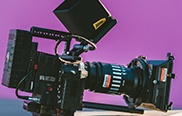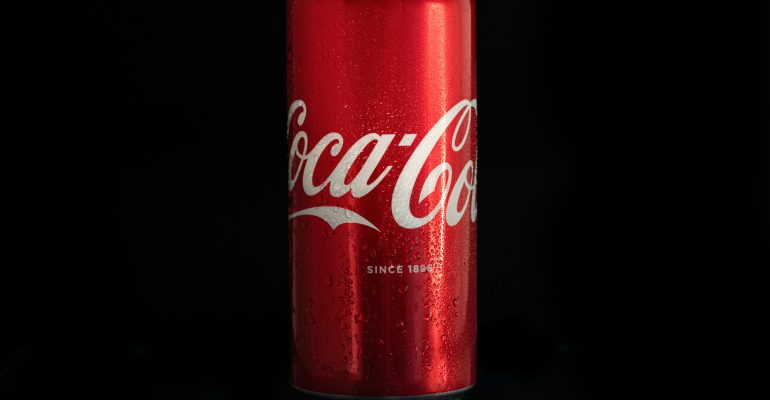Brand awareness is the foundation for ensuring your product or service can step up and capture market attention.
But after you’ve developed your offering, put it out there, organized radio and online ads, blogged about it, and posted so much on social media that you now think in caption format… How can you really be sure your brand awareness is growing?
The fact is, determining your brand’s impact isn’t always easy.
Even those acquainted with your product’s presence won’t always–or immediately–make themselves known at the cash counter or by feedback through surveys, reviews, or social likes.
However, there is good news, and that is that there are specific ways to measure the impact of your brand in the marketplace.
Plus, by utilizing this information, you can not only ensure that your brand is in the sightlines of your customers but that it’s also better positioned in relation to your competitors too.
Before we get into how to measure and boost brand awareness, though, let’s discuss exactly what we mean by it and the reasons it’s necessary if you want to remain and grow as a business.
What is Brand Awareness?
I have a question: What immediately springs to mind when you hear the phrase “I’m lovin’ it”?
Even if you’re not a fast foodie, chances are you’ll think of the burger chain, McDonalds.
That there, people, is brand awareness.
In simple terms, brand awareness is the degree to which folk, particularly your target audience, can recognize and recall your brand when they hear something associated with it.
This could be a jingle like the sonic branding example above, a voiceover, an image or logo, or heck, it could even be the type of product itself.
For instance, if you hear the word “whiskey”, you might immediately think of Jim Beam or Jack D.
That’s brand awareness at the highest possible level and it’s where you want your own product or service to be.
The reason is straightforward: The quicker someone thinks of your brand when they set out to buy a specific product or service, the more likely it is to feature in their ultimate decision-making purchase.
Here’s Why Brand Awareness is Important
Sales, of course, is the end game.
But you want sales without having to sink a shedload of cash into ad spend and content creation.
And here again, is where brand awareness can help.
1. Marketing Effectiveness
By measuring brand awareness you can see whether your marketing campaigns are meeting or missing the mark with your target audience.
This is not solely about whether potential customers can find your brand in an overly-stuffed marketplace; it’s also about whether your brand’s message actually resonates with them when they encounter it.
2. Shape Strategy Development
By doing the above, you can shape many of your future marketing strategies.
For example, if you find your publicity or promotional efforts are falling flat, then you can pull back or change course, depending on what the data’s telling you.
Maybe your brand is getting recognition on a particular social platform while struggling on others.
Or maybe it’s not taking a share of the spotlight anywhere. In that case, you may need to broaden your whole campaign rather than hone in on a select few marketing channels.
Either way, by analyzing your awareness metrics, you can make more informed decisions that stop you from throwing money at strategies that aren’t working.
3. Understand Market Position
In addition, a deep dive into brand awareness patterns can show you where you stand in relation to your competitors and so signal areas for improvement.
For instance, does your target audience understand your brand’s benefits and can they tell you apart from your competitors?
If the answer is a resounding “nu-huh” then it’s likely you need better brand positioning strategies.
Even if consumers are aware of your brand, they might complain of low quality or high prices.
These perceptions—whether right or wrong —can drive them straight into the arms of your competitors and need to be addressed. Swiftly.
Ways to Measure Brand Awareness
Fortunately, mining the metrics that help you see how visible your brand is in the marketplace is more 6th-grade maths than university-level science.
1. Track Website Traffic
One of the simplest ways to measure your brand’s success is by tracking traffic to your website.
There are two types of traffic to keep tabs on—direct and organic.
Direct traffic comes from folks who type your URL straight into the search bar. Organic, on the other hand, highlights those who found their way to your website thanks to a search engine.
Both are important. The former indicates that consumers are already in the know about your brand. The latter suggests there are enough pointers online to lead prospective customers to your site.
Tools that can help you determine both direct and organic traffic include Google Analytics, which is free, or leading tools like Ahrefs and SEMrush, which are free up to a point.
2. Brand Surveys
Surveys are another useful way to get some stats on brand awareness.
You can send them to social media followers, email list subscribers, and current customers. Questions to ask can include how they discovered your brand, how they would describe your offerings, and how they’d rate their experience with your brand.
Using branding tools alongside surveys can also help you measure and track brand awareness more effectively, giving you deeper insights into how your brand is perceived.
If you don’t yet have a large base of supporters or shoppers, you can put a simple survey out to the general public directly asking them, “Have you heard of our brand?”
If they answer “yes”, then follow up with additional questions like where they heard about you and what their thoughts on your product or service are.
This will give you an instant lowdown on how potential customers recognize and perceive your brand.
There’s a host of different survey methods you can use from focus groups to telephone surveys, but by far one of the easiest to get started with is a social media survey.
With five billion people and counting currently getting social on a host of different channels and chatrooms, chances are you’ll receive valuable feedback if you’re strategic about where you post or promote your survey.
Two free options to help you create professional-looking and easy-to-fill-out surveys are Google Forms and SurveyMonkey.
3. Social Media Engagement
This brings us to another important tool to use in tracking brand awareness—social media itself.
Having a social media presence can help bolster brand recognition and recall, particularly if you’re posting regularly.
The more engagement you get from followers and others, the better positioned you are to get an inside scoop on how consumers see you.
Track metrics such as mentions, hashtags, shares, and comments to get a sense of how visible and valued your brand is in the marketplace.
4. Measure Share of Voice
A further way to gauge the impact of your brand is to check out ‘share of voice’ (SoV) metrics.
This is similar to traditional and social media ‘mentions’, but it also includes the number of times your competitors show up in the spaces where you are trying to gain recognition.
By measuring SoV, you’ll gain some insight into whether awareness of your brand is being overshadowed or if it outshines your closest competitors.
You can use online tools to help you figure out your SoV. But if you want to calculate it yourself, the standard formula is as follows:
Your brand’s metrics / total market metrics x 100.
In other words, divide the sum of all your brand metrics (i.e. social mentions, website traffic, advertising clicks, etc) by total market metrics (i.e. your brand’s mentions + competitor’s mentions), and then multiply by 100.
Ways to Boost Brand Awareness
If you want to boost awareness of your brand, then there are several effective methods you can try.
1. Social Media Strategies
Stepping up your social media game is one of them.
After all, social media platforms like Facebook, TikTok, and LinkedIn have enormous audiences.
By implementing certain strategies such as collaborations with influencers or encouraging user-generated content, you can begin to create a bit of buzz around your brand.
2. Get Creative with Content Marketing
Potential customers and brand advocates find your product or service through different routes.
If you’re posting quality blogs, videos, promos, polls, and quizzes that are aimed at educating or entertaining your target audience, they are more likely to remember you, and to like, comment, or share your content.
3. Invest in Audio Marketing and Content
Marketers like to talk about how often we look at our screens and scroll through videos. But few mention that the average US adult spends more than 2 and a half hours (2:42) each day tuning into audio.
Between streaming music, AM/FM radio, and podcasts, the surge in audio content demand has grown enormously over the last few years.
According to Edison Research, 76% of the US population aged 12 and over, which equates to approximately 218 million people, listens to at least one podcast each month.
Additionally, a jaw-dropping 86% of frequent listeners claim they recall podcast ads better than any other channel.
These figures alone make a compelling case for podcast advertising and sponsorship, not to mention creating relevant podcast shows if it’s applicable to your service or product.
And while digital audio is on the rise, radio continues to reign supreme with a weekly reach of approximately 82% of American adults.
So what’s a brand to do when it comes to being an early onboarder of the audio bandwagon?
4. Podcast Advertising and Sponsorship
This is a no-brainer at this stage. Smart brands will collaborate with podcasts to feature their brand in ads or as sponsors.
As we noted in our podcasting advertising article, podcast fans tend to trust the hosts and so, in turn, trust the products that the podcaster recommends.
They might not purchase straight away, but they’re likely to check out the offerings mentioned and so increase their awareness of that particular brand.
5. Radio and Streaming Audio Ads
Traditional AM/FM radio still takes the largest slice of the audio listenership pie, accounting for 37% of daily audio consumption among American adults.
However, don’t close the door to radio’s digital counterparts like radio platform Pandora, and music streaming services such as Spotify and Apple Music.
Creating quick, catchy ads that can be inserted dynamically into all these platforms can go a long way to boosting brand recognition.
6. Sonic Branding
Remember that McDonald’s “I’m Loving It” jingle mentioned earlier? That catchy tune, immediately identifiable with the burger joint, is a great example of sonic branding.
So too is Netflix’s unmistakable “ta-dum” and Coca-Cola’s classic “I’d Like to Teach the World to Sing”, which was so successful, that it was used on and off in advertising for over 40 years after its introduction in 1971.
Research has shown that audio can evoke strong physiological responses, which is why we create emotional connections with certain songs or find our heart rates jumping during audio-filled moments in movies.
The same reactions and connections can be cultivated through audio branding, reinforcing brand awareness each time a specific sound or jingle is heard.
That means, developing your own audio identity, be it a catchy tune, sound logo, or even the same background music for your ads, can help place your product or service front and center in the ears and minds of potential customers.
7. Voice Overs in Marketing
It’s not just sounds or songs that can give you some sonic leverage when it comes to boosting your brand.
Using professional voiceovers for advertisements, explainer videos, and other media, can also effectively convey your brand personality.
Whether it’s edgy or easygoing, like Ursula D. below, the right voiceover can help supercharge the connection with customers who resonate with your message or just ‘get you’.
And you don’t have to worry about creating the right script either. With Voice Crafters’ new 100% FREE AI copywriter tool, you can shape the perfect script for your brand and VO actor in minutes.







2 Comments
One more thing is that when searching for a good on the net electronics retail outlet, look for online shops that are constantly updated, always keeping up-to-date with the latest products, the most effective deals, and also helpful information on goods and services. This will make sure that you are doing business with a shop that really stays over the competition and give you what you should need to make intelligent, well-informed electronics acquisitions. Thanks for the vital tips I have learned through the blog.
Thank you for your feedback. Glad you like the post 🙏